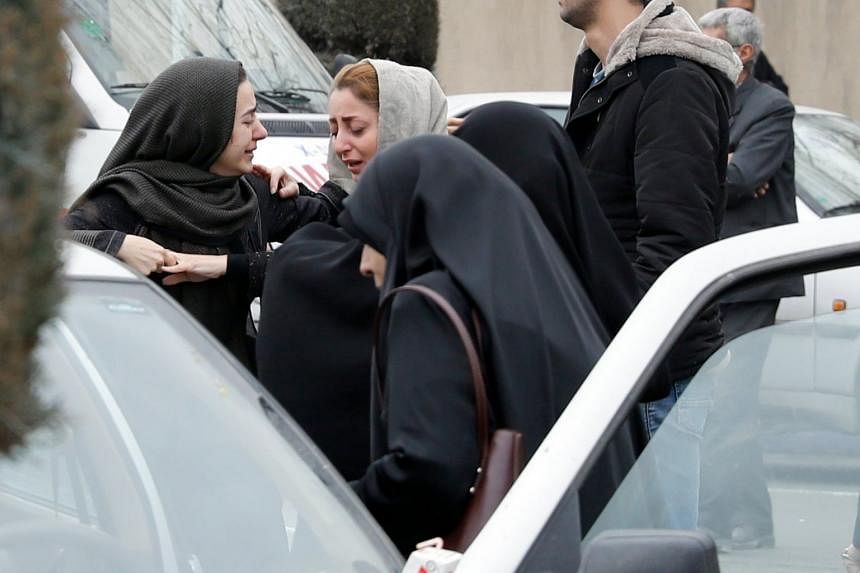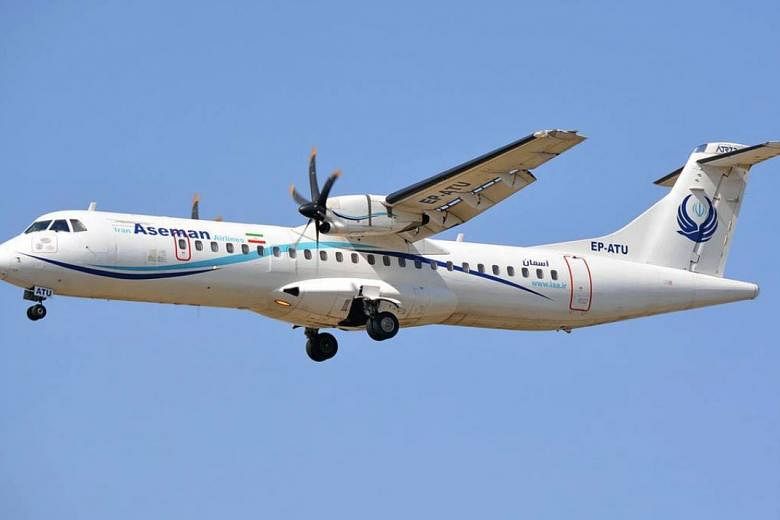TEHERAN (AFP) - An Iranian passenger plane on a domestic flight crashed into the country's Zagros mountains on Sunday (Feb 18) killing all 66 people on board, officials initially said.
This death toll was retracted about an hour later, with a spokesman from the airline saying "we cannot accurately and definitely confirm the death of all passengers of this plane"
The Aseman Airlines flight left Teheran's Mehrabad airport around 0800 (0430 GMT) for the city of Yasuj in Isfahan province, said Mohammad Tabatabai, director of public relations for the airline.
The plane crashed into Dena mountain, part of the Zagros range, around 23 kilometres from Yasuj, some 500 kilometres south of the capital, he told state broadcaster IRIB.
"After searches in the area, unfortunately we were informed that the plane crashed. Unfortunately, all our dear ones lost their lives in this incident," said Tabatabai earlier in the day.
Later, as rescue teams struggled to find the wreckage amid foggy weather, he amended this statement.
"Given the special circumstances of the region, we still have no access to the spot of the crash and therefore we cannot accurately and definitely confirm the death of all passengers of this plane," he told the ISNA news agency.
The plane was carrying 60 passengers, including one child, as well as six crew, he added.

A helicopter sent by Iran's national emergency services was unable to land at the site of the accident due to severe weather, its spokesman said.
The Relief and Rescue Organisation of Iran's Red Crescent said it had dispatched 12 teams to the region.
"Given the fact that the area is mountainous, it is not possible to send ambulances," Mojtaba Khaledi, spokesman for the national emergency services, told ISNA news agency.
Decades of international sanctions have left Iran with an ageing fleet of passenger planes which it has struggled to maintain and modernise.
It has suffered multiple aviation disasters, most recently in 2014 when a Sepahan plane crashed killing 39 people.
Tabatabai said the plane that crashed on Sunday was a twin-engine turboprop ATR-72.
Aseman currently has a fleet of 36 planes - half of them 105-seat Dutch Fokker 100s. Its three Boeing 727-200s are almost as old as the Islamic revolution, having made their first flights in 1980.
Lifting sanctions on aviation purchases was a key clause in the nuclear deal Iran signed with world powers in 2015.
Following the deal, Aseman Airlines finalised an agreement to buy 30 Boeing 737 MAX jets for US$3 billion (S$3.94 billion) last June, with an option to buy 30 more.
However, the sale could be scuppered if US President Donald Trump chooses to reimpose sanctions in the coming months, as he has threatened to do.
The US has maintained its own sanctions on Iran, which block almost all trade with the country, but plane manufacturers were given a specific exemption under the nuclear deal.
Boeing, which is also building 80 planes for national carrier Iran Air, faces heavy criticism from US lawmakers who say Iranian airlines have been used to ship weapons and troops to Syria and other conflict zones.
The US Treasury Department approved the sale of the 80 Boeing jets as well as 100 Airbus planes to Iran Air.
The first few Airbus jets have already arrived in Teheran.


